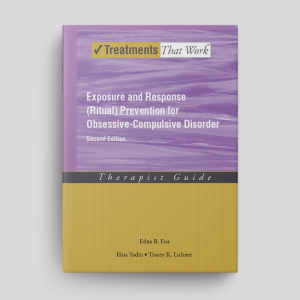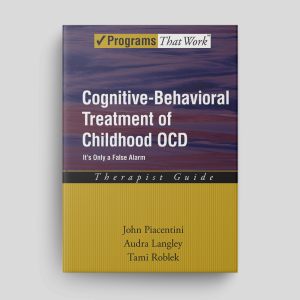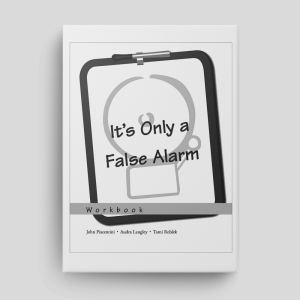Treating Your OCD With Exposure And Response (Ritual) Prevention (Second Edition): Workbook
Exposure and response prevention (ERP) is an effective treatment for obsessive compulsive disorder (OCD). This workbook is designed to help clients understand, manage, and overcome symptoms of OCD. A therapist guide is downloadable separately.
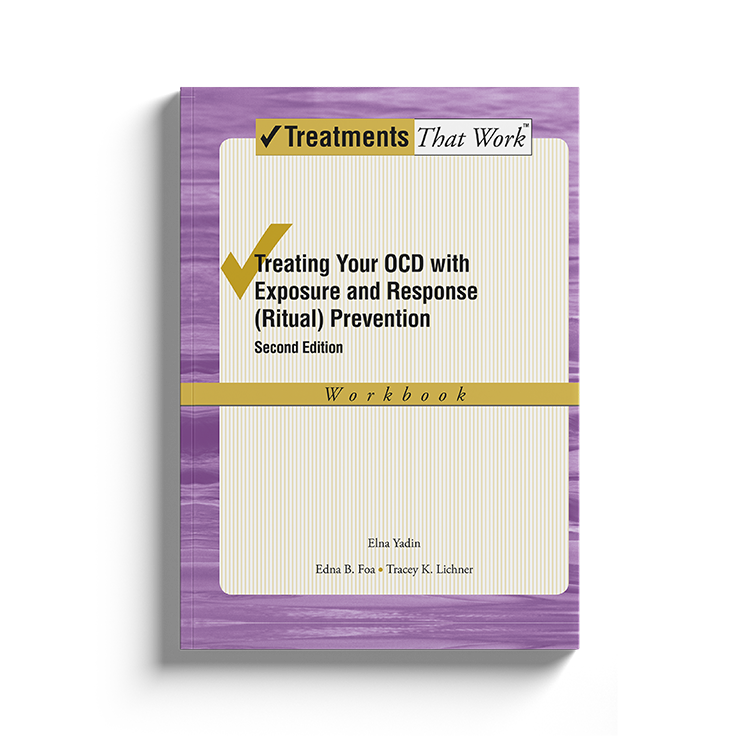
Download or send

Overview
Cognitive behavioral therapy (CBT), including exposure and response prevention (ERP), is an effective treatment for obsessive compulsive disorder (OCD). It is recommended by the American Psychiatric Association (APA) and the UK National Institute for Health and Care Excellence (NICE). The Exposure and Response (Ritual) Prevention for Obsessive-Compulsive Disorder (Second Edition) is written by Edna B. Foa, Elna Yadin, and Tracey K. Lichner, and provides therapists with all the tools they need to deliver effective, evidence-based psychological treatment for OCD. Part of the Treatments That Work™ series, it provides step-by-step instructions for helping clients manage and overcome their OCD, as well as the challenges that can arise during treatment.
Why use this resource?
This workbook provides a structured, accessible program for clients struggling with OCD, written by experts.
- Explains what maintains OCD.
- Describes how to use ERP to overcome OCD.
- Broken into a series of accessible chapters for clients.
- Authored by world-leading experts in the field
- Accompanied by a dedicated therapist guide.
Key benefits
Educational
Structured
Evidence-Based
Flexibile
Trusted
What difficulties is this for?
Obsessive Compulsive Disorder (OCD)
Recurring, intrusive thoughts (obsessions) and repetitive behaviors or mental acts (compulsions) performed to reduce distress or prevent feared outcomes.
Integrating it into your practice
Assessment
Explore how clients experience OCD.
Psychoeducation
Teach clients about OCD and what maintains them.
Skills
Encourage clients to read the workbook and implement the strategies it describes.
Monitoring
Use structured worksheets and feedback to track progress and refine interventions.
Relapse Prevention
Equip clients with long-term strategies for maintaining their progress.
Theoretical background and therapist guidance
OCD can be one of the most debilitating mental health conditions (Mathers & Loncar, 2006) and affects approximately 1% of individuals during their lifetime (Fawcett et al., 2020). Symptoms of OCD include obsessions (repetitive and distressing thoughts, images, or urges) and compulsions (repetitive behaviors, including mental acts, that are performed in response to obsessions). Obsessions and compulsions are often time consuming and can have a significant impact on people’s relationships, work, and ability to function.
Addressing OCD using ERP is seen as one of the great success stories in the field of mental health and has led to dramatic improvements in how OCD is understood and treated (Abramowitz, 2006). Over the last 40 years, an impressive and substantial body of evidence supporting the use of ERP for treating OCD has accumulated. It is recommended for treating depression in clinical practice guidelines developed by the American Psychiatric Association (APA) and the National Institute for Health and Care Excellence (NICE), which produces guidelines for the National Health Service in the United Kingdom (APA, 2007; NICE, 2005). A recent, comprehensive review of studies identified ERP-based CBT as being an effective treatment for OCD and more effective than other forms of therapy (Ferrando & Selai, 2021).
This program for overcoming OCD includes two books:
- Exposure and Response (Ritual) Prevention For Obsessive-Compulsive Disorder: Therapist Guide details the step-by-step treatment of OCD using ERP, including common obstacles.
- Treating Your OCD With Exposure And Response Prevention: Workbook is the companion to this therapist guide. It will help your patients to become active participants in their treatment and learn how to implement ERP independently and with the support of a therapist.
Authored by leading psychologists including David Barlow, Michelle Craske and Edna Foa, Treatments That Work™ is a series of manuals and workbooks based on the principles of cognitive behavioral therapy (CBT). Each pair of books – therapist guide and workbook – contains step by step procedures for delivering evidence-based psychological interventions and will help you to provide the best possible care for your clients. At Psychology Tools, we are proud to make many of the Treatments That Work™ titles available to our members. Each book is available to download chapter-by-chapter, and Psychology Tools members with a currently active subscription to our ‘Complete’ plan are licensed to share copies with their clients.
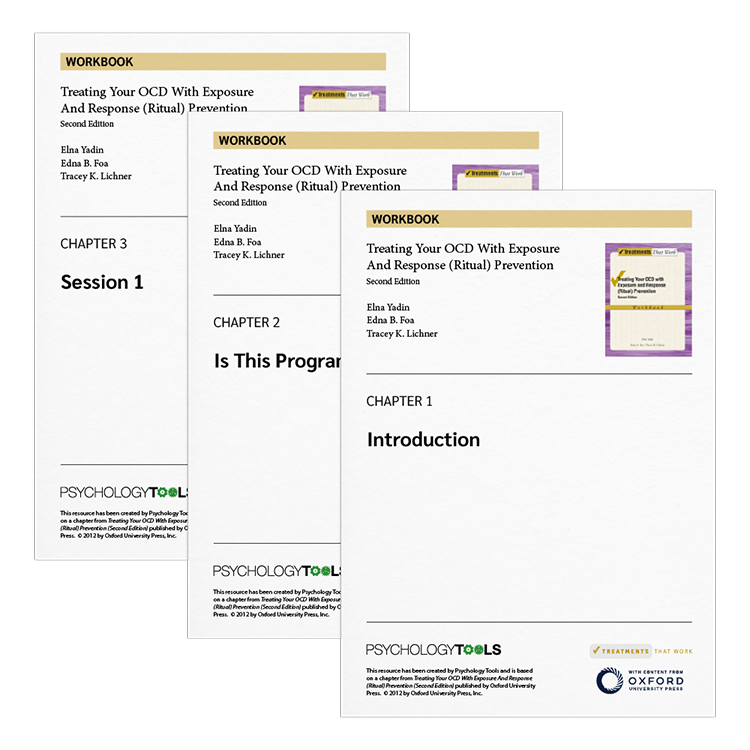
What's inside
- Comprehensive psychoeducation about OCD.
- Effective interventions for achieving long-term improvement.
- Strategies for reducing the risk of relapse.
- Engaging and accessible content written specifically for clients.
FAQs
How this resource helps improve clinical outcomes
By using this workbook, clients benefit from:
- A structured and accessible approach that targets their difficulties.
- Trustworthy guidance and information.
- Effective techniques that enhance progress.
- Tools that support both in-session work and out-of-session practice.
- Lasting improvements and reduced risk of relapse.
Clinicians who use this resource also use
References and further reading
- Foa, E. B., & Kozak, M. J. (1986). Emotional processing of fear: Exposure to corrective information. Psychological Bulletin, 99(1), 20-35.
- Foa, E. B., Yadin, E., & Lichner, T. K. (2012). Treating Your OCD with Exposure and Response (Ritual) Prevention Therapy. Oxford University Press.
- Abramowitz, J. S. (2006). The psychological treatment of obsessive-compulsive disorder. Canadian Journal of Psychiatry, 51(7), 407-416.
- Salkovskis, P. M. (1999). Understanding and treating obsessive-compulsive disorder. Behaviour Research and Therapy, 37(1), S29-S52.
Just enter your name and email address, and we'll send you Treating Your OCD With Exposure And Response (Ritual) Prevention (Second Edition): Workbook (English US) straight to your inbox. You'll also receive occasional product update emails wth evidence-based tools, clinical resources, and the latest psychological research.
Product
Company
Support
- © 2025 Psychology Tools. All rights reserved
- Terms & Conditions
- Privacy Policy
- Cookies Policy
- Disclaimer
Working...
We value your privacy
This site uses strictly necessary cookies to function. We do not use cookies for analytics, marketing, or tracking purposes. By clicking “OK”, you agree to the use of these essential cookies. Read our Cookie Policy
